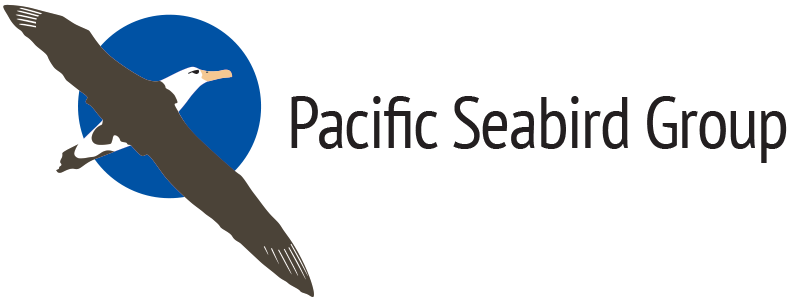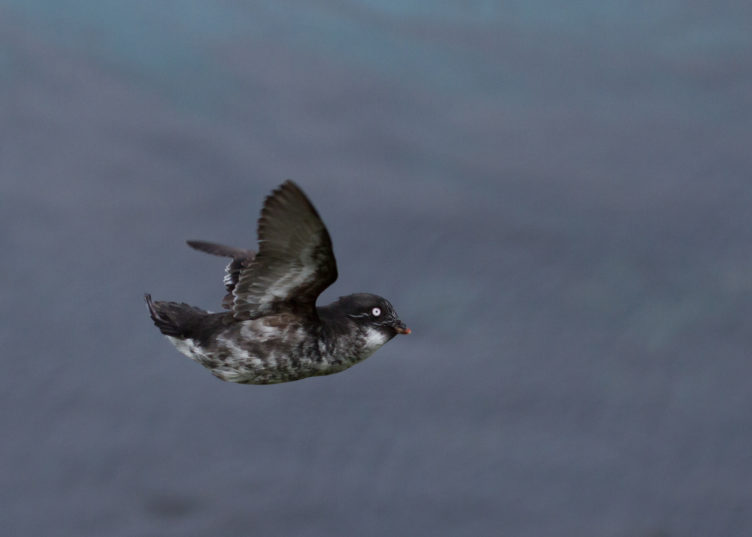Orben et al. (2024a)
Author Information
Rachael Orben, Adam Peck-Richardson, and Alexa Piggott: Department of Fisheries, Wildlife, and Conservation Sciences, Oregon State University, Hatfield Marine Science Center, Newport, OR, USA
James Lerczak, Greg Wilson, and Jessica Garwood: College of Earth, Ocean, and Atmospheric Sciences, Oregon State University, Corvallis, OR, USA
Matt J. Rayner: Auckland War Memorial Museum, Tāmaki Paenga Hira, Auckland, New Zealand
Ariel Lenske: Canadian Wildlife Service, Environment and Climate Change Canada, Delta, BC, Canada
Gregory T.W. McClelland: Canadian Wildlife Service, Environment and Climate Change Canada, Delta, BC, Canada
Mariëlle van Toor: Centre for Ecology and Evolution in Microbial Model Systems, Linnaeus University, Kalmar, Sweden
Sampath S. Seneviratne and Gayomini Panagoda: Avian Sciences and Conservation, Department of Zoology, University of Colombo, Colombo, Sri Lanka
Carlos B. Zavalaga: Unidad de Investigación de Ecosistemas Marinos—Grupo Aves Marinas, Universidad Científica del Sur, Lima, Perú
Miran Kim: Seabirds Lab of Korea, Wonju, Gangwon State, Republic of Korea
Nina Dehnhard, Tycho Anker-Nilssen, Tone Kristin Reiertsen, Kate Layton-Matthews, and Annette Fayet: Norwegian Institute for Nature Research – NINA, Trondheim, Norway
Mindaugas Dagys: Nature Research Centre, Vilnius, Lithuania
Victor R. A. Pimenta: Department of Ecology and Evolutionary Biology, Federal University of São Carlos – UFSCar, São Carlos, Brazil
John P. Y. Arnould and Thomas Cansse: School of Life and Environmental Sciences, Faculty of Science, Engineering and Built Environment, Deakin University, Burwood, Victoria, Australia
Flavio Quintana: Instituto de Biología de Organismos Marinos (IBIOMAR), CONICET, Puerto Madryn, Chubut, Argentina
Alexa D. Foster: Red Sea Research Center, Division of Biological and Environmental Science and Engineering, King Abdullah University of Science and Technology, Thuwal, Saudi Arabia
Sabir Bin Muzaffar: Department of Biology, College of Science, United Arab Emirates University, Al Ain, UAE
Eleanor A. Weideman: BirdLife South Africa, Seabird Conservation Programme, Cape Town, South Africa
Susana Cárdenas-Alayza: Departamento Académico de Ciencias Biológicas y Fisiológicas, Facultad de Ciencias e Ingeniería, Universidad Peruana Cayetano Heredia, Lima, Peru
Rachael Orben (Assistant Professor – Senior Research, Oregon State University (OSU)), Adam Peck-Richardson (Faculty Research Assistant, OSU), and Alexa Piggott (Faculty Research Assistant, OSU) entered the fifth year of the Cormorant Oceanography Project. This interdisciplinary project is developing and deploying novel biologging tags on cormorants and shags to collect oceanographic data while gaining insights into seabird ecology. 2023 was a busy year seeing our global collaborations take off. We supported the tagging effort of ten cormorant and two penguin species in 14 different countries (Spotted Shags (Phalacrocorax punctatus) in New Zealand; Great Cormorants (P. carbo) in Sweden, Lithuania, and Republic of Korea; Indian Cormorants (P. fuscicollis) in Sri Lanka; Neotropic Cormorants (Nannopterum brasilianum) in Peru and Brazil; Temminck’s Cormorants (P. capillatus) in Republic of Korea; European Shags (Gulosus aristotelis) in Norway; Black-faced Cormorants (P. fuscescens) in Australia; Brandt’s Cormorants (Urile penicillatus) in Canada, Imperial Cormorants (Leucocarbo atriceps) in Argentina; Socotra Cormorants (P. nigrogularis) in Saudi Arabia; African Penguins (Spheniscus demersus) in South Africa; Humboldt Penguins (S. humboldti) in Peru). This included our continued Socotra Cormorant tagging effort in Bahrain with critical support from Sabir Bin Muzaffar (Professor – UAE University) and Alexa Foster (KAUST). We also continued to work with tag manufacturers (Ornitela) to refine GSP-GSM tags to measure salinity (conductivity + temperature) and to refine tag programming to improve tag power management. The resulting physical oceanography datasets were shared with oceanographers at OSU. Jim Lerczak (Professor, OSU), Greg Wilson (Assistant Professor, OSU), Jessica Garwood (Assistant Professor, OSU), and Xiaohui Liuare (Research Associate, OSU) are processing bird-derived data to describe water column properties and to calibrate satellite-derived oceanographic models. Planning for 2024 is underway for additional deployments in the Baltic, Norway, Peru, Brazil, Sri Lanka, India, and Australasian regions. This effort is funded by the Office of Naval Research.






